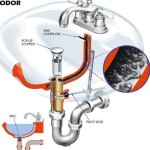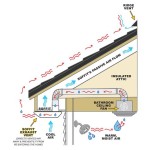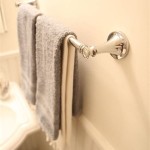How to Replace Broken Bathroom Floor Tile
A broken bathroom floor tile can be an eyesore and a safety hazard. Fortunately, replacing a broken tile is a relatively straightforward DIY project that can be accomplished with the right tools and materials. This article will guide you through the process of replacing a broken bathroom floor tile step-by-step, ensuring a smooth and successful repair.
1. Gather the Necessary Tools and Materials
Before starting the replacement process, you'll need to gather all the necessary tools and materials. Here's a comprehensive list:
- New tile (matching the existing tiles)
- Tile adhesive (thin-set mortar)
- Grout (matching the existing grout)
- Grout sealant
- Bucket
- Sponge
- Grout float
- Chisel
- Hammer
- Utility knife
- Goggles
- Dust mask
- Gloves
- Measuring tape
- Level
- Notched trowel
- Damp cloth
Ensure you have a tile that closely matches the existing tiles in terms of size, color, and pattern. If necessary, visit a home improvement store and consult with an associate to find the appropriate tile.
2. Prepare the Area
Prepare the bathroom floor for tile replacement by clearing the surrounding area and protecting it from dust and debris. Here's how to do it:
- Clear the area around the broken tile: Remove any objects or furniture that might obstruct your work.
- Protect surrounding areas: Cover the bathtub, toilet, and nearby furniture with drop cloths or plastic sheeting to prevent dust and debris from contaminating them.
- Turn off the water supply: This is crucial for safety, especially if working near plumbing fixtures. Turn off the main water supply to the bathroom.
3. Remove the Broken Tile
Carefully remove the broken tile to make way for the new one. Here's how:
- Score the grout: Using a utility knife, carefully score the grout lines surrounding the broken tile.
- Chisel the tile: Place the chisel against the edge of the tile and gently tap it with the hammer. This will help break up the tile. Continue chipping away at the tile until it's completely removed.
- Clean the area: Remove any remaining tile fragments or debris from the area.
It is essential to wear protective goggles and a dust mask while removing the broken tile to prevent inhaling dust particles and avoid any eye injuries.
4. Prepare the Tile Adhesive
Mix the tile adhesive (thin-set mortar) according to the manufacturer's instructions. Use a clean bucket and mix the adhesive to a smooth, creamy consistency. Ensure you mix it thoroughly, avoiding any lumps or clumps.
You can use a power drill with a mixing attachment for more efficient mixing. Be careful not to overmix, as this can lead to air bubbles in the adhesive.
5. Apply the Adhesive and Install the Tile
Once the tile adhesive is prepared, it's time to apply it to the area where the new tile will be installed:
- Apply the adhesive: Spread a thin layer of adhesive onto the area where the tile will be placed. Use a notched trowel to ensure an even layer and create grooves for better bonding.
- Position the tile: Place the new tile on top of the adhesive. Ensure it's level and flush with the surrounding tiles.
- Press firmly: Press down firmly on the tile, ensuring it's firmly seated in the adhesive.
- Adjust as needed: If the tile needs to be adjusted, use a rubber mallet to tap it gently into place.
If the tile needs to be adjusted, use a rubber mallet to tap it gently into place. Do not use excessive force as this could damage the tile or surrounding tiles.
6. Allow the Adhesive to Cure
After installing the tile, allow the adhesive to cure completely. The curing time will vary depending on the type of adhesive used and the ambient temperature. Refer to the adhesive manufacturer's instructions for the recommended curing time. It is crucial to avoid placing any weight on the new tile during the curing period.
7. Apply the Grout
Once the adhesive has cured, you can apply the grout. Here's how:
- Mix the grout: Mix the grout according to the manufacturer's instructions using a clean bucket.
- Apply the grout: Use a grout float to apply the grout onto the tile joints, ensuring you fill them completely.
- Remove excess grout: Wipe away excess grout with a damp sponge, working diagonally across the tile joints.
- Clean the tile: Once the initial grout has dried, clean the tile surface with a clean, damp cloth.
Allow the grout to cure according to the manufacturer's instructions. Avoid placing any weight on the tile during this time.
8. Seal the Grout
Once the grout has fully cured, apply grout sealant to protect it from water, stains, and mold. This will help maintain the appearance and longevity of your bathroom floor. Follow the manufacturer's instructions for application and drying time.

How To Replace A Broken Tile Ace Hardware
.png?strip=all)
How To Fix Loose Or Broken Ceramic Floor Tiles

How To Repair Chipped Or Broken Tile And Replace Grout

5 Ways To Patch Tile

Solved How To Repair Ed Chipped Tiles Surface Masters

How To Repair A Chipped Bathroom Tile

Home Dzine Bathrooms Fix Chipped Or Ed Tiles

How To Remove Replace One Bathroom Tile Ceramic Repair

Precautions For Tile Ing Tips To Repair Ed

How To Repair Ed Tile Grout An Easy Guide The Lived In Look
Related Posts







